STREETS AHEAD AT BEAULIEU
17 January 2025
One of my favourite attractions of the National Motor Museum at Beaulieu is Streets Ahead, illustrating the changes in motoring in the 1950s, 1960s and 1970s. So, in tribute, here is a list of developments encountered by drivers of that era, starting in 1950, when only 18 per cent of UK households had a car...
1950
Petrol rationing ends on the 26th of May.
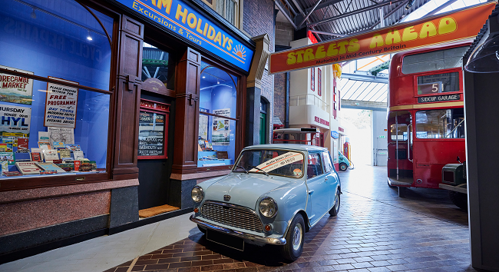
1951
Slough is the venue for the first zebra crossing on the 31st of October.
1952
London trams’ last run on the 6th of July.
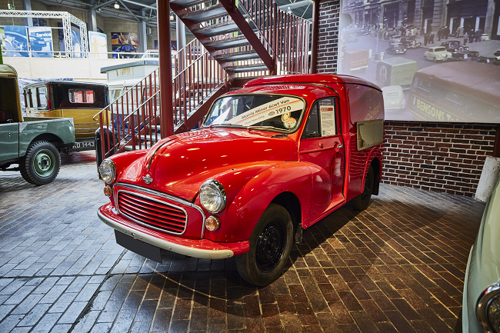
1953
Belisha beacons now flash, but a letter to The Times ranted: “They are only a confounded nuisance.”

1958
The introduction of double yellow lines.
The 10th of June marks the first parking meters, installed by Westminster City Council. An hour of parking cost 6d.
At 11:15am on the 5th of December, drivers entered the Preston Bypass, the UK’s first motorway. There are no speed limits and Chief Inspector Little of Lancashire Constabulary warned drivers: “If families use the motorway at weekends, father must take a firm hand. Any distractions from the back seat by his wife could be very dangerous.”
1959
The M1 opens on the 2nd of November. The great racing driver Tony Brooks wrote: “More than anything – more than Espresso bars, jeans, rock ‘n’ roll, the smell of French cigarettes on the underground, white lipstick – it is of the twentieth century.” A less impressed Minister for Transport thought: “I have never seen anybody going so fast and ignoring the rules and regulations.” Of the first 13,000 cars on the new motorway, more than 100 broke down and one actually shed its engine.
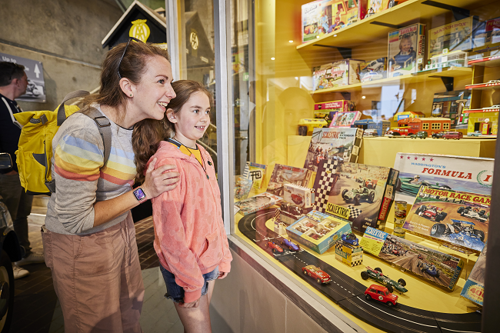
1960
The first 40 traffic wardens, clad in black and yellow uniforms, started to patrol the streets of London on the 19th of September. They issued their very first ticket to the Ford Popular belonging to Thomas Creighton, a doctor assisting a heart attack victim at a West End hotel. The Daily Mirror reported him saying: “I’m darned if I’m going to pay the £2 fine on this parking ticket. I shall take the matter up at the highest level.” The fine was subsequently withdrawn, following public outcry.
The UK’s first motorway diner opens at Newport Pagnell on the 15th of August. A spokesperson assured the press: “Lorry drivers’ favourites – such as sausage and mash, steak and kidney pie, egg and chips – will all be available.”
On the 12th of September, owners of cars aged 10 years or older could submit their vehicle for a voluntary Ministry of Transport roadworthiness test. Twelve thousand five hundred garages with a white triangle logo carried out the 15-shilling examination – including one shilling for the certificate – of the brakes, lights and steering. An unimpressed motorist wrote to The Liverpool Echo: “For sheer nonsense this takes the biscuit. Judging from press photographs and reports ‘the old car’ is hardly ever observed as the culprit in a smash.”
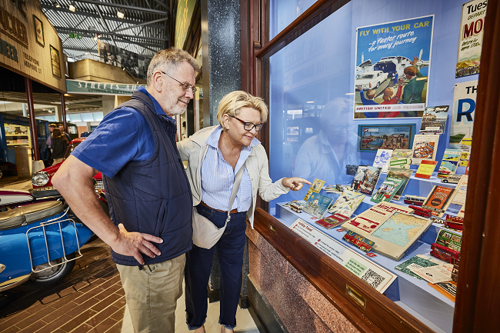
1961
The UK’s first automated level crossing barriers open in Staffordshire on the 5th of February.
On the 15th of February, the MOT test ceases to be “voluntary”.
On the 11th of November, the Total petrol station at Southwark Bridge boasts the UK’s first self-service pumps.
The end of the AA salute.
1962
The panda crossing comes to London on the 2nd of April but proved so confusing that by 1967 they were no more.
London’s final trolley bus runs on the 8th of May.
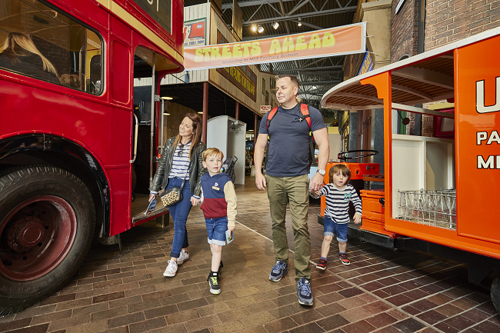
1963
The end of the RAC salute.
Holders of a motorcycle licence are no longer obliged to have the reverse gear of a three-wheeled car blanked off.
1964
On the 9th of December, the government introduces the first European-style road signs.

1965
The introduction of the 70-mph motorway speed limit on the 22nd of December. One motoring writer complained: “Who is going to buy a sports car, from the new fastback MGB to a Jaguar E-type, when such cars are restricted to a speed lower than they can attain in 3rd gear?”
Amber indicators are now a legal requirement for new cars sold in the UK.
1967
On the 17th of March, petrol was sold in “star” gradings, using a British Standard set of octane ratings.
On the 1st of April, cars and light vans must have front-seat safety belt anchorage points.
On the 8th of October, a Shropshire driver became the first motorist to be subjected to a roadside breath test in the UK. It was now an offence to be in control of a motor vehicle if you had a blood alcohol concentration of over 80mg of alcohol per 100ml of blood. The penalties for being above the minimum limit ranged from a fine of up to £100 and disqualification from driving for up to 12 months to imprisonment. Meanwhile, garages sold test-yourself kits – one was named the Drink-o-Meter – and letters to the national motoring press berated Barbara Castle, the Minister for Transport, for her inability to drive, for being a woman and for being a killjoy. The fact that by 1965 post-war road deaths were at their highest level seemed to have passed them by.
The UK’s first box junctions.
The MOT test now applies to cars aged three years or older.
1968
The introduction of the David Mellor traffic lights.
On the 31st of July, the retrospective installation of front seatbelts on cars registered between the 1st of January 1966 and the 31st of March 1967 became a legal requirement.
October sees the UK’s first mini-roundabout – Peterborough is the location of this new road development.

1969
The 14th of July marks the opening of the UK’s first pelican crossings; London had 19, with the rest in Bristol, Lincoln and Reading.
1971
In April, the Green Cross Code succeeds the Kerb Drill after 18 months of research undertaken by the Department of Education and Science, the Road Research Laboratory and RoSPA. An advertisement stated: “There’s four times as much traffic as there was twenty years ago.”

1973
From the 1st of June, motorcyclists, moped riders and their pillion passengers are obliged to wear crash helmets.
1975
Hand signals cease to be a part of the driving test.
https://www.beaulieu.co.uk/news/street-of-nostalgia-ahead-for-the-national-motor-museum/
